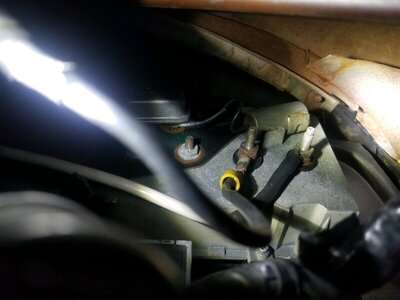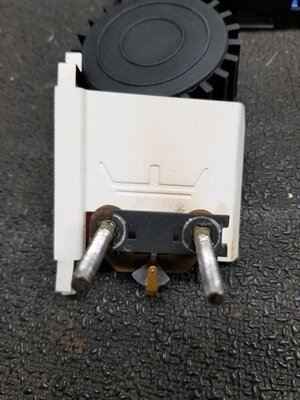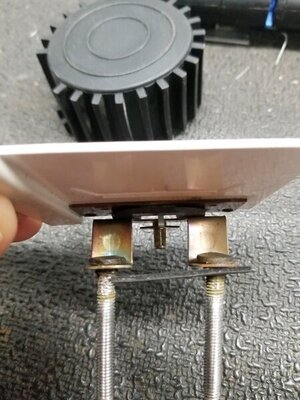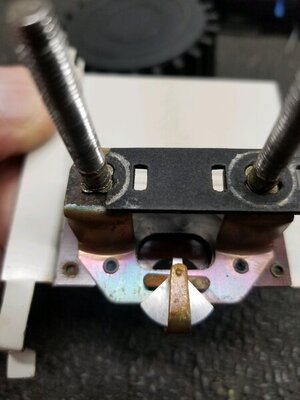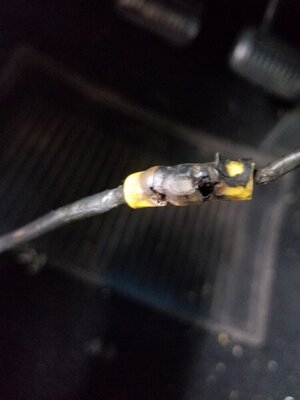LowBikeMike
Well-Known Member
1969 Road Runner 383 4 Speed, Factory Air, previous owner converted to 1 wire Alternator. I cannot find any markings on Alt, but I can see what appears to be an external regulator attached to the back. The case is grounded to chassis. Single wire from Alternator runs directly to Ammeter. Connection at bulkhead has been eliminated, connector wallowed out and wire ran straight through to meter. Other side of meter is connected to splices and back out to starter relay via fuseable link. Battery resting voltage is 12.5 volts, starts easy, no hard crank, runs good. So, here is Ammeter behavior
When starting Ammeter needle doesn't move. After start up, voltage reads 14.5v and Ammeter midway to Charge side. Voltage and Ammeter stay consistently with those reading during normal driving with no Accessories on. Turn signal, drops voltage a few tenths, and Ammeter fluctuations with each blink. When I turn the AC on, Ammeter goes further to Charge indicator and voltage drops to 13. 6, car still runs fine, increasing fan speed moves Ammeter further to charge and voltage drops a bit more. With AC on or heavy load, Tachometer reads low, no other working gauges to judge. At idle, voltage will drop to 12.5 and below sometimes
A couple of things are bothering me. 1. Am I loosing voltage due to an underpowered Alternator, 2. Why am I not seeing a discharge when cranking (I see a discharge with key off, headlights on,but not with key on and any other Accessory turned on and engine not running) 3. Is my tach inaccurate during high load, because of low voltage (Mallory Unilite Ignition).
What are your thoughts.
When starting Ammeter needle doesn't move. After start up, voltage reads 14.5v and Ammeter midway to Charge side. Voltage and Ammeter stay consistently with those reading during normal driving with no Accessories on. Turn signal, drops voltage a few tenths, and Ammeter fluctuations with each blink. When I turn the AC on, Ammeter goes further to Charge indicator and voltage drops to 13. 6, car still runs fine, increasing fan speed moves Ammeter further to charge and voltage drops a bit more. With AC on or heavy load, Tachometer reads low, no other working gauges to judge. At idle, voltage will drop to 12.5 and below sometimes
A couple of things are bothering me. 1. Am I loosing voltage due to an underpowered Alternator, 2. Why am I not seeing a discharge when cranking (I see a discharge with key off, headlights on,but not with key on and any other Accessory turned on and engine not running) 3. Is my tach inaccurate during high load, because of low voltage (Mallory Unilite Ignition).
What are your thoughts.

